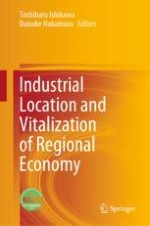2023 | OriginalPaper | Buchkapitel
2. Corporate Taxation and Regional Economic Development in Japan: A Panel Analysis of Prefectural-Level Data
verfasst von : Masahiro Shinohara
Erschienen in: Industrial Location and Vitalization of Regional Economy
Verlag: Springer Nature Singapore
Aktivieren Sie unsere intelligente Suche, um passende Fachinhalte oder Patente zu finden.
Wählen Sie Textabschnitte aus um mit Künstlicher Intelligenz passenden Patente zu finden. powered by
Markieren Sie Textabschnitte, um KI-gestützt weitere passende Inhalte zu finden. powered by
